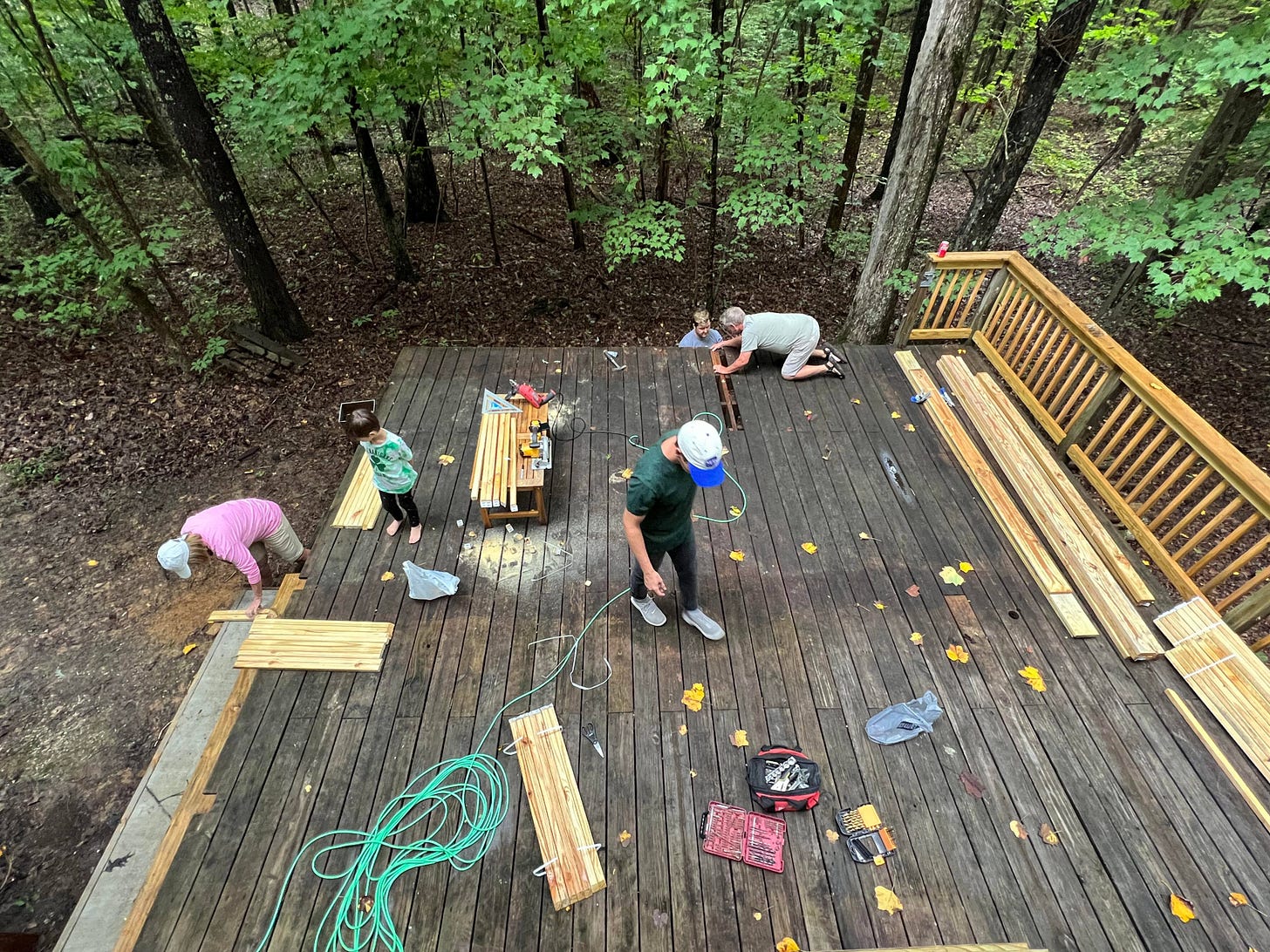My parents and one of my brothers spent Labor Day weekend helping us prepare Woodsong for future Airbnb guests. We painted ceilings, built a deck, tidied the bedrooms.
Oh, and my mother cleared a mountain of cardboard boxes from the garage.
I’m not exaggerating when I say that this pile of cardboard was taller than me. A second home requires an entire second home’s worth of furnishings—much of which we ordered online or picked up from Ikea and had to assemble ourselves. Every time we unboxed another mattress or table or kitchen utensil, the packaging was thrown on top of the heap.
(Thankfully, Mom consolidated most of the enormous pile, and we’ll recycle it bit by bit in occasional trips to the local dump.)
Today I built two nightstands to add to the bedrooms. If you’ve ever built prefabbed furniture, you know that the process tends to involve inadequate hardware, cheap wood, and confusing instructions. Maybe also some choice words muttered under your breath.
These nightstands were different styles and brands, requiring different steps of assembly. One was even missing two holes where I was supposed to put screws—I wound up drilling them myself. But in each case, there came a point when I doubted that the wood slats and screws and pegs would all hold; it all seemed too flimsy, the pieces weren’t snug, everything was bound to collapse as far as I could tell.
The thing is, I remembered other pieces of furniture I’ve assembled before. (Alec and I once furnished an entire apartment with Ikea products, so though I’m rusty, I’m familiar with this sort of thing.) And I remembered that this always happens near the end, it always seems on the verge of collapse.
Until you tighten the screws.
You have to go slowly, twisting until this board comes flush with that slat, then moving on to the next. As you tighten, you can see the pieces moving closer together. And eventually the whole thing solidifies.
Isn’t this a bit like writing a story?
All those fragments that seem thin, unsupported, disjointed. And how you have to tighten them bit by bit, watching the many pieces join into one cohesive THING.
It might come after you thought you had tightened as far as you could, only to discover a screw almost imperceptibly loose; it might come after you thought you had finished but realized that there were two unused screws left in the box, and would you look at that, there are some gaps in the sides, and suddenly they disappear once you use the leftover screws.
Isn’t it funny how we seem to forget, every time, that this is the process?





